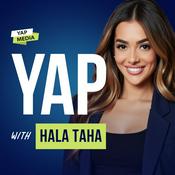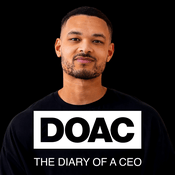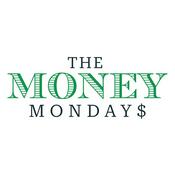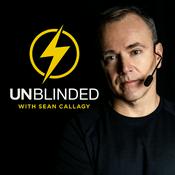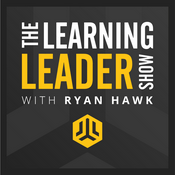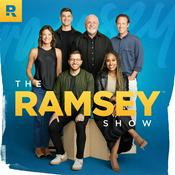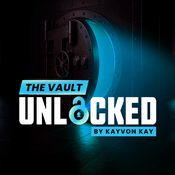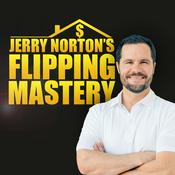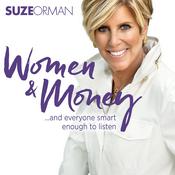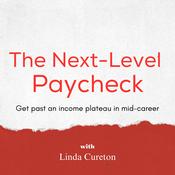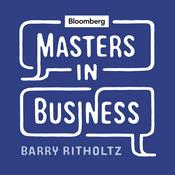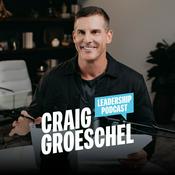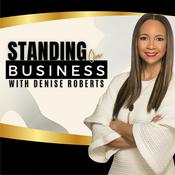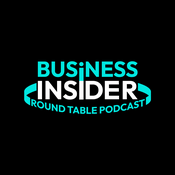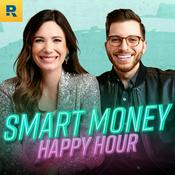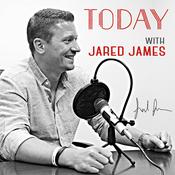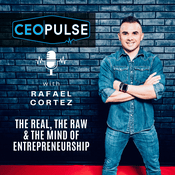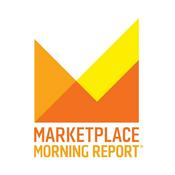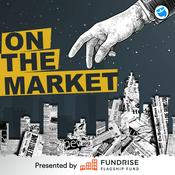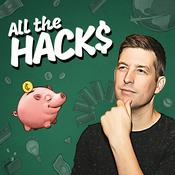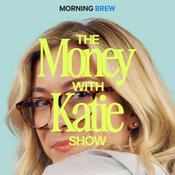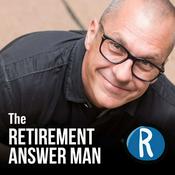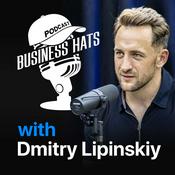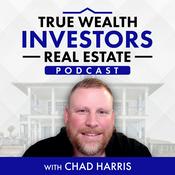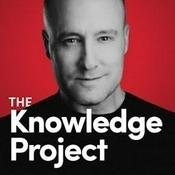48 episodes

How to Save $50,000 in Taxes by Moving Your Investments to the Right Accounts
12/29/2025 | 43 mins.
For those of you looking for more helpful resources, check out the amazing companies that make this endeavor in free financial literacy possible: 1) If you are running small business and DON'T want to make your taxes yet ANOTHER small business, check out Gelt today. They can help small business owners and high net worth individuals who are looking for strategy beyond filing. 2) And if you are tired (as I was for WAY too many years) of paying rent and feeling as if you were getting nothing in return, check out Bilt, and consider joining their renters' loyalty program. It is an amazing way to -finally- get something back after years of feeling like you're throwing money towards someone else's equity. Most people spend a lot of time obsessing over what to invest in. Very few people think seriously about where those investments should live — and that mistake can cost you tens of thousands of dollars over a lifetime. In this episode, Tyler breaks down account placement strategy — the unglamorous, aggressively unsexy topic that quietly determines how much of your money you actually get to keep. Because just like real estate, with investing it’s all about location, location, location. This isn’t about finding the perfect fund. It’s about putting the right investments in the right accounts. In this episode, Tyler covers: The three main types of investment accounts — tax-deferred, tax-free, and taxable — and what each one is actually for Why taxes matter more than most people realize, and how bad account placement creates avoidable tax bills Which investments belong in retirement accounts (and which absolutely don’t) How access and liquidity should shape where your money lives, especially if you want flexibility before retirement Why volatility feels different depending on the account, and how to use that to your psychological advantage Real-world examples showing how small placement changes can save real money over time Along the way, Tyler explains why “max everything and figure it out later” isn’t always smart, how over-locking money can quietly limit your life choices, and why the goal isn’t tax perfection — it’s alignment. Alignment between your accounts, your investments, your time horizon, and the life you actually want to live. This episode isn’t about optimizing every dollar with spreadsheets and IRS tables. It’s about not making preventable mistakes. Put tax-inefficient investments where they’re protected. Put volatile investments where you’re less likely to panic. Put short-term money where you can actually reach it. And stop throwing money into random accounts and hoping it works out. If this episode helped something click — or made you realize you might want to move a few things around — leaving a quick review on Apple Podcasts or Spotify genuinely helps. It helps other people find the show and keeps this whole project going. As always, the goal isn’t perfection. It’s getting one step closer to alignment. Hope this gives you something to think about this week.

Why Men Are Terrible Investors (And Lose 1% More Than Women Every Year)
12/22/2025 | 31 mins.
This week's helpful resources: Fabric (term life) and Gelt (small business taxes). Term life insurance sits at step three in my financial order of operations—before your emergency fund—because if something happens to you, it becomes the emergency fund for everyone you leave behind. Get covered in ten minutes at meetfabric.com/tyler. If you're a small business owner or high net worth individual, finding the right tax partner isn't optional—it's the first domino that determines whether you keep your money or hand it to the IRS. Start with a free consultation at joingelt.com/tyler. And now back to the show(notes!) :) Most investing mistakes don’t feel like mistakes while you’re making them. They feel reasonable. Sometimes they even feel responsible. In Part 2 of this behavioral economics series, Tyler moves past the “greatest hits” and into the deeper, quieter biases that don’t get talked about as much — but are still quietly wrecking portfolios day after day. Think album tracks, not radio singles. If Part 1 was Madison Square Garden, this episode is the smaller venue where the real damage happens. In this episode, Tyler breaks down five lesser-known behavioral biases: The Disposition Effect — why we sell winners too early and cling to losers too long The Ostrich Effect — how avoiding uncomfortable information can sabotage your plan Mental Accounting — why treating dollars differently based on where they came from is costing you real returns The Gambler’s Fallacy — how seeing patterns in randomness leads to terrible timing The Action Bias — why doing something often feels better than doing the right thing (which is usually nothing) Along the way, Tyler explains why these behaviors feel correct in the moment, why willpower doesn’t fix them, and why most investors don’t need better predictions — they need better systems. Automation. Rules. Fewer decisions. Less fiddling. This episode isn’t about becoming more active or more sophisticated. It’s about accepting a hard truth: successful investing is supposed to be boring. If it’s exciting, you’re probably paying for that excitement with your returns. If this episode helped you recognize one habit you need to break — or one urge you need to stop indulging — leaving a quick review on Apple Podcasts or Spotify genuinely helps. It helps other people find the show and keeps this whole experiment going. Until next time, remember: the best investors aren’t the smartest. They’re the ones who do the least amount of dumb stuff.

Your Brain Is Stealing $245,000 From Your Retirement (Here's How to Stop It)
12/15/2025 | 49 mins.
Here are a few helpful resources from the people who support this show and keep it free for you. Always. If you’ve ever wondered whether you’re doing “fine” with your money or just hoping future-you figures it out, Facet sets you up with a team of expert CFP® professionals who look at your entire financial life — not just your investments, and not just the parts that are fun to talk about at dinner parties. No commissions. No product pushing. Just real advice for one flat annual membership fee. If you're interested in heading into 2026 with a real financial plan from real experts, check out Facet today, here. -- Most people don’t lose money because they pick terrible investments. They lose money because they’re human. In Part 1 of this two-part series on behavioral economics, Tyler walks through the five most common psychological biases that quietly, systematically sabotage investment returns — even when you’re invested in low-cost index funds and “doing everything right.” This episode is about the stuff that happens between your ears. The mental shortcuts. The overreactions. The stories we tell ourselves after the fact. In this episode, we cover: Why overconfidence makes investors trade more and earn less How recency bias convinces us that whatever just happened will keep happening Why we overvalue the investments we already own (even when we shouldn’t) How loss aversion turns normal market volatility into bad decisions Why hindsight bias makes the past feel obvious and the future feel predictable (it isn’t) This isn’t about being smarter than the market. It’s about building systems that protect you from your own instincts — automation, diversification, fewer decisions, and a little less checking. If the show has helped you think differently about money — maybe even made you laugh while doing it — please take 30 seconds to leave a review on Apple or Spotify. It helps more than you think and keeps this whole experiment in free, digestible financial literacy alive and well.

5 Things I Won't Do With My Money in 2026
12/08/2025 | 33 mins.
Here are a few helpful resources, from those who continue to make this show possible for and accessible to you. Visit them today to learn more! To experience what you've been missing by paying rent without getting some amazing rewards along the way, check out how Bilt can help you, here. And if you're like me and have started a small business and don't want to make managing your taxes your SECOND business, explore Gelt today, here. There’s something oddly therapeutic about deciding what not to do with your money next year. Like a financial New Year’s resolution — but with fewer spreadsheets and way less kale. In this episode, Tyler flips the usual “5 things millionaires do” format on its head and shares the five things he refuses to do with his money in 2026. From why he won’t pay off his mortgage early to why high-yield savings accounts aren’t the financial flex you think they are, this episode is all about resisting motion for motion’s sake and reclaiming simplicity in a culture obsessed with doing more. You’ll learn: Why not paying off your mortgage early can actually make you money (hint: opportunity cost). Why high-yield savings accounts aren’t as “safe” or “smart” as they seem — and what to use instead. The trap of saving or investing just to feel responsible, and how to reconnect your money with purpose. Why spending for the sake of deductions is just expensive procrastination (and how to stop doing it). How to keep your portfolio simple — and why complexity almost always costs more than it earns.Tyler reminds listeners that real wealth isn’t about doing more — it’s about doing less, better. This is your invitation to create your own “Not To Do” list for 2026: the habits, purchases, and pressures you’re done with. If the show has helped you think differently about money — maybe even made you laugh while doing it — please take 30 seconds to leave a review on Apple or Spotify. It helps more than you think and keeps this whole experiment in free, digestible financial literacy alive and well.

The $2 Million Portfolio Plan No Advisor Wants You to See
12/01/2025 | 37 mins.
If you’ve ever wondered how to invest $2 million—or any substantial portfolio—without losing sleep, this episode is for you. I break down a simple, historically backed approach: 90% in stocks (VOO/VTI), 10% in a money market fund (SPAXX). This allocation maximizes growth, keeps volatility manageable, and allows you to spend confidently. We challenge conventional wisdom: the 4% rule is too conservative for most retirees. With disciplined withdrawals of $120k–$200k per year, your portfolio can keep pace with inflation, fund meaningful experiences, and still grow over time. Think of it as the financial equivalent of having your cake, eating it, and watching it regenerate. We also tackle the psychology of spending: most retirees underspend, living smaller than necessary due to “consumption gap anxiety.” Intentional withdrawals for travel, family experiences, and “bucket list” adventures can bring more lasting happiness than accumulating wealth alone. Historical context matters: even through market crashes—2008, 2020—you can maintain your lifestyle using a 10% cash buffer. Percentages matter more than principal; the strategy scales from $500k to $20M. And if it's good enough for Buffett's estate...it's good enough for me. Key Highlights: Percentages over principal: 90/10 allocation works for nearly any portfolio size. Withdraw confidently: $120k–$200k/year supports lifestyle while portfolio grows. Spend for experiences: vacations, relationships, and quality of life matter more than hoarding. Liquidity is your friend: 10% in cash lets you ride out crashes without selling stocks. High-stakes bingo: later in retirement, increase withdrawals for “once-in-a-lifetime” experiences. Resources and research mentioned in this episode: William Bengen, 4% Rule (1994) Michael Kitces on dynamic withdrawals Wade Pfau, Safety-First Retirement Planning Bill Perkins, Die With Zero David Blanchett, Retirement Spending Smile If this episode helps you feel more confident about using your money to live well, consider leaving a review on Apple or Spotify. Your feedback helps keep this financial literacy experiment alive. And if you're still feeling stuck and are looking for expert advice for a flat annual membership fee, check out this episode's sponsor, Facet, by going to facet.com/tyler
More Business podcasts
Trending Business podcasts
About Your Money Guide on the Side
Listen to Your Money Guide on the Side, Money Rehab with Nicole Lapin and many other podcasts from around the world with the radio.net app
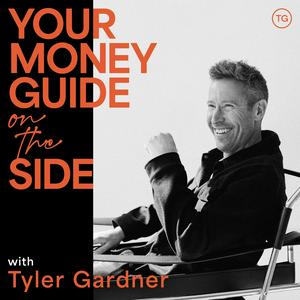
Get the free radio.net app
- Stations and podcasts to bookmark
- Stream via Wi-Fi or Bluetooth
- Supports Carplay & Android Auto
- Many other app features
Get the free radio.net app
- Stations and podcasts to bookmark
- Stream via Wi-Fi or Bluetooth
- Supports Carplay & Android Auto
- Many other app features


Your Money Guide on the Side
download the app,
start listening.

